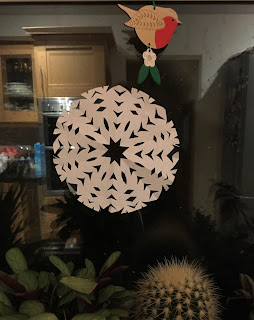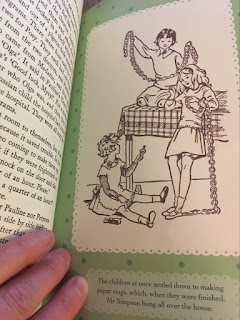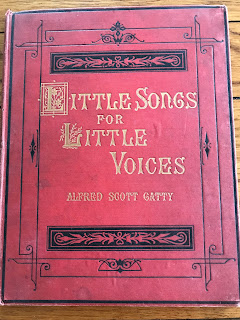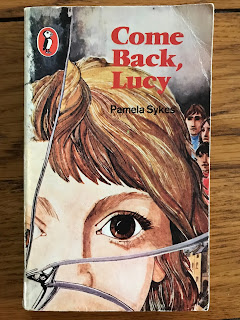Tuesday, 9 April 2024
#MaryQueenofScots - 10 Pictures and a Classroom Resource
However, Scotland was not the country she had left behind. The Catholic Mary was returning to a now Protestant Scotland. Influential preachers like John Knox had persuaded many influential noblemen to become Protestants, including Mary's half-brother and closest advisor James Stewart. From the very beginning of her reign, John Knox tried to stir up trouble for Mary. As a writer, I was particularly interested in this newly arrived 18-year-old Queen Mary. She certainly didn't have her troubles to seek, but she appears to have had considerable charm and vivacity, travelling across Scotland on lengthy progress journeys and indulging in dancing, riding, hunting and hawking. I found myself particularly fascinated by Mary's love of falconry and decided to make my boy hero an apprentice falconer. This necessicated some research, both theoretical... ...and practical. Particular mention is made of Mary's merlins for which she had a particular fondness. A merlin is Britain's smallest bird of prey, but more than capable of hunting and supplying the Palace kitchens with larks, for example. I discovered that the Catholic Earl of Huntly became a formidable foe when Mary did not back his wishes for a counter-reformation to reinstate Catholicism. On her progress north in the summer of 1562, she snubbed the Ear's invitation to visit his castle at Huntly, then called Strathbogie. Here I am, visiting its ruin. Mary was probably wise not to trust the Earl - rumour had it that he planned to kidnap the Queen and marry her forcibly to his son. Instead, Mary bypassed his castle and gathered support to finally defeat the Earl at the Battle of Corrichie, fought in Aberdeenshire in October 1562. Mary was victorious. It is true that in the years to come, Mary made some very questionable choices, particularly when it came to the men she chose to trust. However, she also had more than her fair share of bad luck and unfair treatment at the hands of others. In The Boy, the Witch and the Queen of Scots, I hope that I can portray a different, more hopeful side of the tragic queen: a fun-loving, considerate, charismatic, thoughtful and energetic go-getter, a teenager who is all too often judged too harshly. Whatever the truth, Mary's iconic status and hold on the imagination is set to continue, as this recent exhibition on her cultural legacy shows. Barbara Henderson is the award-winning author of eleven books. Her new title, The Boy, the Witch and the Queen of Scots, is out from Luath Press now. Find out more about Barbara at www.barbarahenderson.co.uk.
Tuesday, 6 December 2022
Christmas and Mary, Queen of Scots by Barbara Henderson
It is hard to imagine that not so very long ago, Christmas celebrations were frowned upon in this country. I share a December birthday with the famous Mary, Queen of Scots. Both of us were born on the 8th of December, in the run up to Christmas. You may not be aware, but Mary’s father died days after her birth in 1542. He had recently sustained a humiliating defeat at the Battle of Solway Moss. Bruised and ailing, he visited his pregnant wife at Linlithgow Palace before travelling on to Falkland Palace where he took to his bed with a fever. When he heard that his wife, the French-born Mary of Guise had given birth to a girl rather than the hoped-for male heir, it is said that he turned his face to the wall and died of despair!
Thursday, 9 December 2021
Christmas Traditions - by the Time Tunnellers
In our final blog post before Christmas, the Time Tunnellers explore some favourite traditions.
Jeannie Waudby: My Christmas tradition is something we used to do as children. We always made our own decorations, usually from scrap paper or crepe paper bought from a fantastic tiny stationer’s. It was only big enough for a long counter behind which an old man perched on his stool with wonderful things around him: rolls of shiny paper, glitter, pots of paste…
A paper snowflake
We made window snowflakes by folding paper circles in half again and again and then snipping little triangles out. Once unfolded they formed a snowflake pattern.
The nice thing about this decoration is its use of low-key materials – paper and scissors. In a short time you can make enough snowflakes to cover a window. You can make them more dramatic by using silver paper or by varying the sizes, and you can experiment with different shapes.
Scissors and paper is all you need
We also made paper chains out of cut-up magazines and old wrapping paper and draped them across the doors and walls. These were also quite quick and easy to make. People would have made these throughout the last century and even the one before. Here are the Fossil sisters from Ballet Shoes by Noel Streatfield with their paper chains, illustrated by Ruth Gervais.
Ballet Shoes by Noel Streatfield, illustrated by Ruth Gervais
Susan Brownrigg:When I was little, my family received lots and lots of Christmas cards. I remember helping my mum drawing pin long pieces of red wool on the walls of the living room and hall and placing the open cards over them. Their would be cards from distant relatives, former work colleagues and loved ones who lived over seas.
The cards would often feature snowy scenes, golden bells, cute animals, Father Christmas and nativity scenes. They would look so cheery and festive as we counted down the days to Christmas.
Sadly, I don't have any of those cards anymore, but I do have a lovely small collection of cards from the 1930s which I use when visiting schools to talk about my new children's book, Gracie Fairshaw and the Trouble at the Tower, which is set at Christmas, 1935.
The cards are much smaller than those my mum put up in the 1980s, but they feature many of the same scenes.
I love looking at the old verses and personal messages in side them, and they really give a sense of the times. I especially like one design I own that features a very 1930s Fox Terrier on it!
I wonder what future generations will make of card designs from the 2020s!
Wooden nativity set
The first one is a song. Every Boxing Day, my mum’s family would stand around the piano and sing a song called ‘Christmas Boxes’ from an old Victorian song book.
Little Songs for Little Voices songbook
I think the tradition started when my granny was a child, over a hundred years ago, but it may be even older as the book is from the 1870s.
Christmas Boxes
The tradition has passed down to me, my cousins and our families (though the quality of the piano-playing has declined somewhat!) I know Christmas is coming when I get out our Advent nativity scene, but I know it is really here when I hear the first few chords of ‘Christmas Boxes’.
Come Back, Lucy by Pamela Sykes
The other thing I do most Christmases is reread an old children’s book - Come Back, Lucy by Pamela Sykes. First published in 1973 and now sadly out of print, it is a wonderful Christmassy time-slip story about a lonely girl who moves into a Victorian house with a new family and is haunted by the girl who lived there in 1873, with dramatic results. It is one of the most imaginative, evocative books I have ever read. I only have to open it to get that lovely, enveloping Christmas feeling!
Ally Sherrick: Christmas wouldn’t be Christmas without present-giving, no matter how big or small the gift. Of course, the Christian Nativity has a gift-giving scene at its heart – when the three wise kings travel from afar bearing gifts of gold, frankincense and myrrh to give to the infant Jesus. But the tradition of present-giving in December began long before the emergence of Christianity.
Christmas present
For example, the Roman festival of Saturnalia, held to honour the god Saturn, and which took place in the dark days leading up to the winter solstice, was a time of great feasting and merry-making, and of gift-giving too.
But modern gift-givers beware! Extravagant presents were looked down on as not being in the spirit of the season. If you really wanted to show the recipient you cared, simple gifts were judged to be the best. Things like combs, toothpicks, moneyboxes and lamps.
A Roman lamp
And, usefully for budding authors, writing tablets! People also gave small wax and clay statues known as sigillaria and joke gifts too. Meanwhile, if you fancied yourself a bit of a poet you might include a line of verse or two – much like we do in Christmas cards today.
Happy Saturnalia! And remember: the best things often come wrapped in small parcels ...
I timed my visit so I could catch a talk about Christmas at the Court of the ill-fated Mary – these sorts of things add such wonderful colour to a historical novel.
The Time Tunnellers would like to wish our readers a Happy Christmas, we will return in the new year.
VIKING ATTACK! Write a DUAL NARRATIVE ACTION SCENE
VIKING ATTACK! Write a DUAL NARRATIVE ACTION SCENE First, watch the Time Tunnellers video about the Viking Attack on the Holy Island of L...

-
VIKING ATTACK! Write a DUAL NARRATIVE ACTION SCENE First, watch the Time Tunnellers video about the Viking Attack on the Holy Island of L...
-
That the Paralympics rose out of such a dark place, from the ashes of the Second World War, wounded men and a fugitive from the Nazis, says ...
-
On Thursday July 4th, the U.K will go to the polls to vote in the General Election. Eligible voters will select from a list of candidates wh...
























